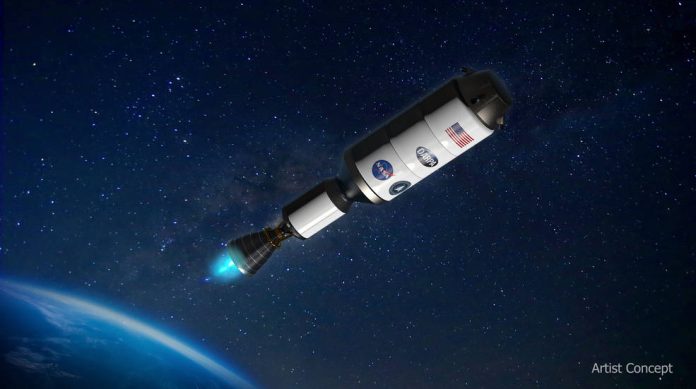NASA and the Defense Advanced Research Projects Agency (DARPA) announced a collaboration to demonstrate a nuclear thermal rocket engine in space, an enabling capability for NASA crewed missions to Mars, according to a press release issued by NASA.
NASA and DARPA will partner on the Demonstration Rocket for Agile Cislunar Operations, or DRACO, program. The non-reimbursable agreement designed to benefit both agencies, outlines roles, responsibilities, and processes aimed at speeding up development efforts.
Using a nuclear thermal rocket allows for faster transit time, reducing risk for astronauts. Reducing transit time is a key component for human missions to Mars, as longer trips require more supplies and more robust systems. Maturing faster, more efficient transportation technology will help NASA meet its Moon to Mars Objectives.
Under the agreement, NASA’s Space Technology Mission Directorate (STMD) will lead technical development of the nuclear thermal engine to be integrated with DARPA’s experimental spacecraft. DARPA is acting as the contracting authority for the development of the entire stage and the engine, which includes the reactor. DARPA will lead the overall program including rocket systems integration and procurement, approvals, scheduling, and security, cover safety and liability, and ensure overall assembly and integration of the engine with the spacecraft. Over the course of the development, NASA and DARPA will collaborate on assembly of the engine before the in-space demonstration as early as 2027.




